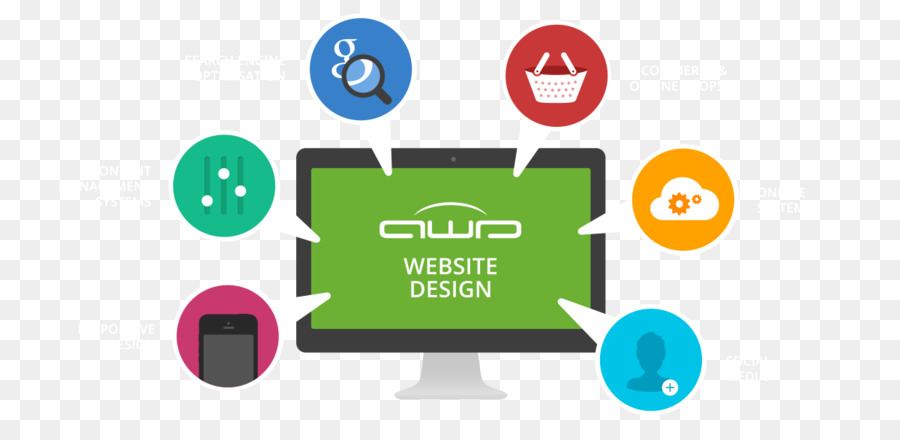The Advancement Of Site Layout: From Earlier Times To Now
The Advancement Of Site Layout: From Earlier Times To Now
Blog Article
Short Article Created By-Pappas Dalby
In the past, web sites were simple and concentrated on details. you can check here was direct, and style was for desktop computers. Now, individual experience is key. Data guides layouts for easy navigating. Responsive formats suit different devices. Today, dark setting reduces pressure, and minimal food selections boost navigating. Interactive features engage customers, and strong visuals stick out. AI combination increases engagement. See how layout has actually evolved to enhance your on-line journey.
Early Days of Website Design
In the very early days of web design, simpleness reigned supreme. Sites were standard, with restricted colors, font styles, and designs. The emphasis was on offering information instead of fancy visuals. Individuals accessed the internet via sluggish dial-up connections, so rate and functionality were essential.
Navigating food selections were straightforward, generally located at the top or side of the page. Web sites were designed for computer, as mobile surfing wasn't yet prevalent. Content was king, and designers prioritized easy readability over intricate design aspects.
HTML was the key coding language utilized, and developers needed to work within its restrictions. Computer animations and interactive attributes were very little compared to today's standards. Internet sites were static, with little vibrant material or individualized customer experiences.
Increase of User-Focused Layout
With the advancement of web site layout, a shift in the direction of user-focused style principles has actually become increasingly noticeable. Today, producing web sites that focus on user experience is critical for involving visitors and achieving company objectives. User-focused layout involves recognizing the needs, choices, and actions of your target audience to customize the internet site's design, web content, and features as necessary.
Developers currently perform extensive research, such as user surveys and use testing, to collect insights and responses directly from customers. This data-driven technique helps in creating user-friendly navigation, clear calls-to-action, and visually appealing user interfaces that resonate with site visitors. By positioning the user at the center of the layout process, web sites can supply an extra tailored and satisfying experience.
Responsive design has actually likewise emerged as a crucial facet of user-focused style, making sure that websites are enhanced for different tools and screen dimensions. This versatility improves availability and usability, accommodating the diverse means individuals interact with websites today. In https://www.google.com/maps/place/Moon+and+Owl+Marketing/@32.9757271,-106.5344695,1840583m/data=!3m1!1e3!4m6!3m5!1s0x864ddeaa4179705b:0x488d41d2cc6b9750!8m2!3d32.9757271!4d-97.5696258!16s%2Fg%2F11b6mpccrg?entry=ttu&g_ep=EgoyMDI1MDIxMS4wIKXMDSoJLDEwMjExNDUzSAFQAw%3D%3D , the increase of user-focused design symbolizes a change in the direction of developing electronic experiences that prioritize the needs and expectations of completion user.
Modern Trends in Website Design
Check out the most up to date trends forming web design today. One prominent fad is dark setting style, using a streamlined and modern-day appearance while decreasing eye strain in low-light atmospheres. An additional key fad is minimalist navigation, simplifying menus and boosting individual experience by focusing on essential elements. Including micro-interactions, such as animated switches or scrolling results, can develop an extra appealing and interactive web site. Receptive style stays critical, guaranteeing smooth customer experiences throughout various tools. Furthermore, using strong typography and unbalanced layouts can add aesthetic passion and draw attention to particular content.
Integrating AI technology, like chatbots for customer assistance or customized referrals, improves user interaction and simplifies processes. Accessibility has also come to be a substantial trend, with developers prioritizing inclusive layout practices to deal with varied customer demands. Embracing sustainability by enhancing web site performance for rate and efficiency is another arising pattern in website design. Working together with customer comments and information analytics to iterate and boost style continuously is important for staying appropriate in the ever-evolving electronic landscape. By accepting these contemporary fads, you can create an aesthetically attractive, user-friendly website that resonates with your audience.
Conclusion
As you assess the advancement of website layout from the very early days to now, you can see exactly how user-focused style has actually come to be the driving pressure behind contemporary trends.
Accept the trip of change and adjustment in web design, constantly keeping the individual experience at the leading edge.
Stay current with the latest patterns and modern technologies, and never quit evolving your technique to create visually stunning and user-friendly sites.
Progress, adjust, and create - the future of website design remains in your hands.
